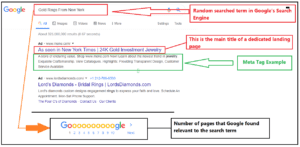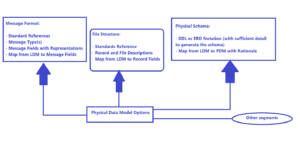In the last few decades businesses have understood that in order to survive in a pool of competition, search engine optimization association to business is vital.
Search engine optimization, or also widely known as SEO is the fundamental ground to ensuring that such business will be able to continue to engulf in business and the mere interaction with their clients. While in most cases SEO is a tactic to help gain more business, some businesses consider SEO for the sake to help gain virtual business visibility.
Regardless of what the tactic may be used for, SEO is a strategic way to go. SEO tactics can vary, thus depending on the marketing perspective deployed from each company. One essential way to consider optimization for an existing business is undergoing the practice of Schema / structured data sets in association to a website.
In this review, we will be diving into the spectrum of schema or structured data sets. We will be also highlighting the different types and why they are beneficial for any organization.
What is Schema / Structured Tags?
Schema structures can be utilized through different encodings, which include RDFa, Microdata and JSON-LD. These structures the relationship between the actionable (call to’s) and the entities (business platform such as a website).
Currently, there are over 10M websites that use Schema.org to help makeup and tailor their web pages and email messages. Many applications from Google, Microsoft, Pinterest, Yandex, and others already use these vocabularies to help enrich and provide an exceptional experience for customers accordingly.
Meta Tags (Meta Descriptions)
There is a big difference between schema / structured tags versus meta tags. Many marketers and article writers know about meta tag description and writing as it plays a vital role in providing information or insights that support a specific title through a search term in major search engines.
Most of the time, a search engine like Google, grants 10 listings per page, with a number of results pages. The following images below are sets of examples;


According to the image above, a meta tag description provides an entire overview of a website or the dedicated landing page. However, it does not provide details to anything specific, apart from the overview of such business, service, product or solution.
Schema / Structured Description / Coding
Schema / Structured data are vitally different just as meta tags/descriptions. Schema j/ structured data comes in a number of methods. The following are the common types of methods practiced by many businesses;
• Physical schema
• Logical/file schema
• View schema


Since schemas can be dedicated to three different categories or more, schemas can also be written in HTML codes. The following may be some examples that you may have come across in the past;
-
-
- Visual Schema Structure
- Coded Schema Structure
- Readable Message Schema Structure
-
Depending on the organization or business needs, each scheme segment can be altered in order to provide customers, potential visitors, and other prospects with insightful information, without the individual diving too deep into a particular landing page.
What are the types of Benefits Schema / Structured Offers?
Benefits can vary, as it all depends on the company goals or the intended vision. In most cases, schemes are altered and particularly enriched with specific keywords to help Google efficiently filter and run its’ algorithm system to highlight a dedicated landing page of a particular website.
Moreover, schema structures “specifically” discuss a particular solution, product or service and when clicked upon, it directs the user directly to the interested solution, product or service that they previously read or the phrase(s) that caught their attention.
Benefits
As mentioned previously, there are a number of reasons to consider schema in relations to HTML. However, in most cases, the benefits are as follows;
• Webmasters: Instead of marketers attempt schema tactic through a number of sources, Schema.org provides a comprehensive markup and a guideline to consider.
• Search engines: Helps to define the item types or categories alongside properties which are considered the most valuable to major search engines. This simply means that search engines like Google will be able to harness vital specifications and details, which provides a “richer” experience for prospects.
• Users: When webmasters add markup, collectively, users will use and gain a better quality of experience while on the particular site.
On-page markup helps search engines validate and comprehend the information that is allocated on a dedicated landing web page, which ultimately provide an upturn in quality and user experience. A shared markup schema can make things much easier for webmasters to consider a markup schema for a particular landing page (HTML).
Today, major search engines are geared to make users (traffic) life much easier for searchers to find relevant information over the internet. As a result, markup can also enable tool application(s) that makes such schema data more useful or critical for a particular user. Schema’s / Structures data can be vital if the right individual knows exactly what he/she is doing.
As a result, it indefinitely provides customers and or potential prospects with enough information for them to consider whether or not if such solution, product, service or dedicated landing page is the right type of page that they were looking for in the first place.




